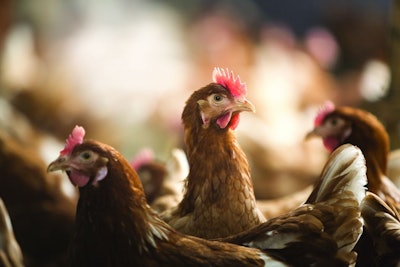
A couple of weeks ago I visited a big layer integration in India. The farmer explained to me that his current flock was 95 weeks old. I was quite surprised by this, considering that the hens were in exceptionally good health and still performing well. However, I was blown away when the farmer told me that he once had a flock of 130 weeks, also without any problems.
While 130 weeks might be an exception, we do see that layer longevity is gaining interest, and I welcome this. At the end of the standard 80-week cycle, most layers still have a productivity of at least 90%, and we know that today’s layer lines can easily handle more weeks in production.
Benefits of a longer lay
The fixed 75-80-week cycles have, over the years, have simply slipped into our standards and are often driven by planning and practicalities, for example ordering pullets many weeks in advance, or by the "we've always done it like this" way of thinking.
However, poultry farming is changing, driven by precision farming, new nutrition practices and sustainability demands.
Importantly, extending the life cycle of hens has economic benefits. While we cannot increase egg production that much over 80 weeks into the cycle, we can increase the total eggs per hen.
By doing so, we can spread the investment costs of the pullets, increasing the margin per bird; although feed costs and egg prices will determine how far longevity can be extended.
There is also a sustainability aspect to longevity. Keeping birds longer reduces the carbon impact per bird or kilogram of eggs.
Precision formulation
If we really want to increase layers’ life span, we must let go of fixed ways of working and address the knowledge gaps.
Current genetic lines may be able to easily handle longer cycles, but breeder companies simply do not have feed recommendations that go beyond 80 weeks, and this means that the same diet is fed to older layer birds.
But we know that nutrient digestibility and calcium uptake decrease a little when birds are older and that feed intake increases slightly, and this change can result in more cracked eggs.
We need to consider the metabolic changes in older birds and adjust diets by adding accordingly. This is an area that poultry nutritionists are exploring and fine-tuning.
Multifactorial approach
Increasing longevity is not, however, simply about adjusting the diet – it is a multifactorial approach.
The Indian farmer had on-farm pullet production, and carefully monitored stocking density, climate, health, feed quality and water supply.
We also see that investing in young pullets is crucial where longevity is concerned. If pullets reach the desired body weight at week five and develop a healthy intestinal tract early on, stretching the lay period becomes easier, and flock productivity is increased.
We now consider a bird over 50 weeks as an "older hen," but this is simply due to the current cycle length that we use.
I think that, in the coming years, the layer industry's definition of old will change. Age is just a number, particularly if we can make sure that the hen is as healthy and productive – and more sustainable – as her younger sisters.
Managing key pullet, layer gut health challenges

















